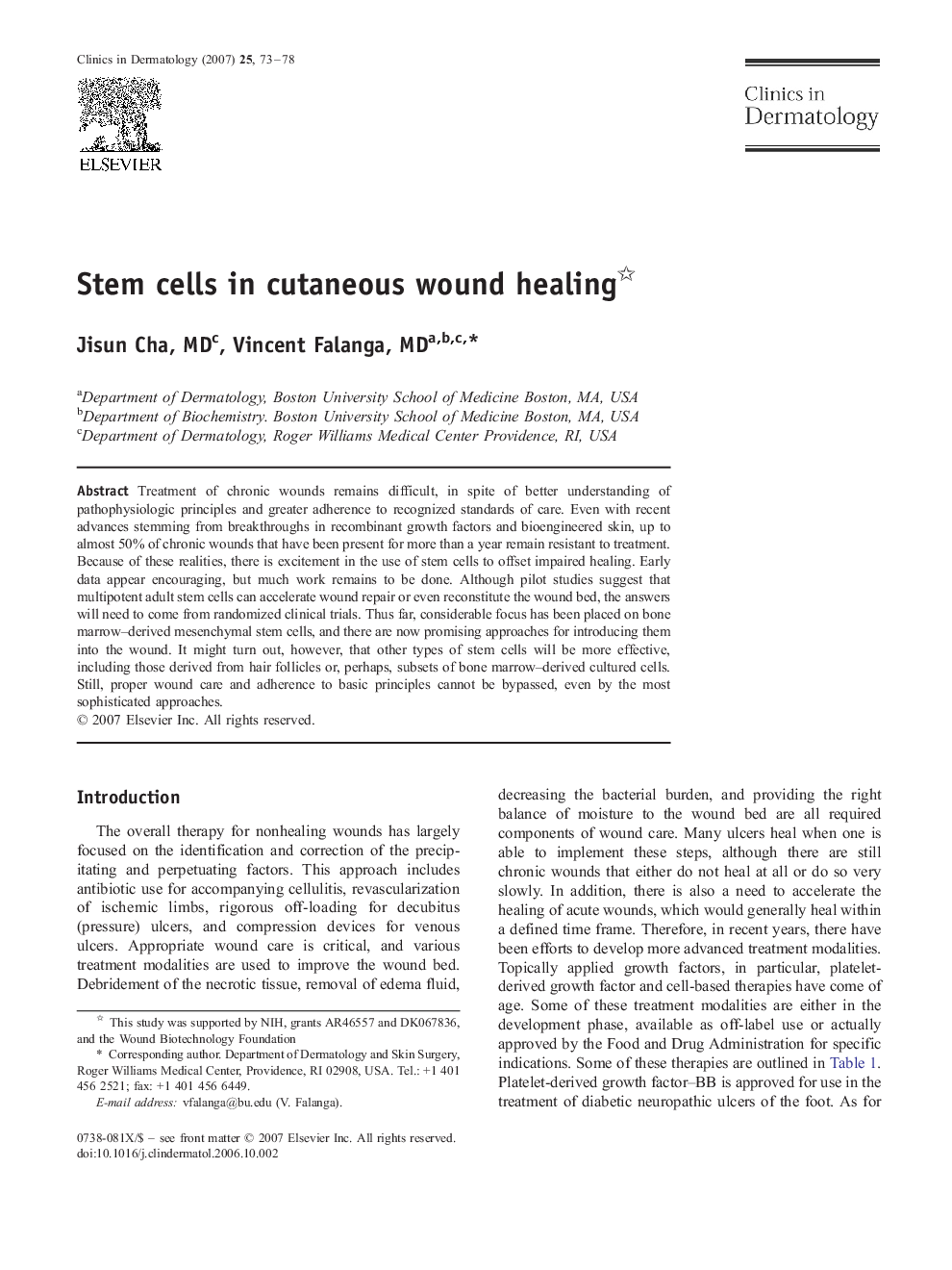| Article ID | Journal | Published Year | Pages | File Type |
|---|---|---|---|---|
| 3194924 | Clinics in Dermatology | 2007 | 6 Pages |
Treatment of chronic wounds remains difficult, in spite of better understanding of pathophysiologic principles and greater adherence to recognized standards of care. Even with recent advances stemming from breakthroughs in recombinant growth factors and bioengineered skin, up to almost 50% of chronic wounds that have been present for more than a year remain resistant to treatment. Because of these realities, there is excitement in the use of stem cells to offset impaired healing. Early data appear encouraging, but much work remains to be done. Although pilot studies suggest that multipotent adult stem cells can accelerate wound repair or even reconstitute the wound bed, the answers will need to come from randomized clinical trials. Thus far, considerable focus has been placed on bone marrow–derived mesenchymal stem cells, and there are now promising approaches for introducing them into the wound. It might turn out, however, that other types of stem cells will be more effective, including those derived from hair follicles or, perhaps, subsets of bone marrow–derived cultured cells. Still, proper wound care and adherence to basic principles cannot be bypassed, even by the most sophisticated approaches.
